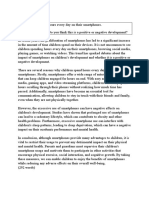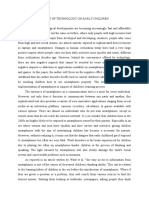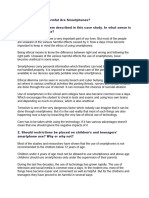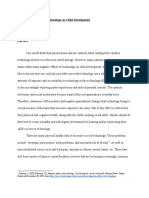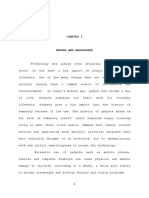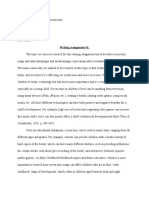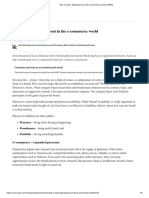0% found this document useful (0 votes)
36 views8 pagesResearch Questions
The document discusses the effects of smartphones on child development from multiple perspectives. It notes that excessive smartphone use can negatively impact children's social and emotional development, cognitive development, physical health, and behavior. However, in moderation and with proper guidance, smartphones can help children develop digital literacy skills and access emergency services. More research is still needed to fully understand both the risks and benefits of smartphone use for children.
Uploaded by
mariamalshafei98Copyright
© © All Rights Reserved
We take content rights seriously. If you suspect this is your content, claim it here.
Available Formats
Download as DOCX, PDF, TXT or read online on Scribd
0% found this document useful (0 votes)
36 views8 pagesResearch Questions
The document discusses the effects of smartphones on child development from multiple perspectives. It notes that excessive smartphone use can negatively impact children's social and emotional development, cognitive development, physical health, and behavior. However, in moderation and with proper guidance, smartphones can help children develop digital literacy skills and access emergency services. More research is still needed to fully understand both the risks and benefits of smartphone use for children.
Uploaded by
mariamalshafei98Copyright
© © All Rights Reserved
We take content rights seriously. If you suspect this is your content, claim it here.
Available Formats
Download as DOCX, PDF, TXT or read online on Scribd
/ 8

